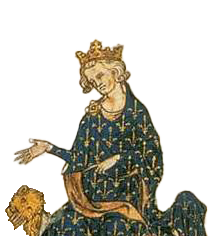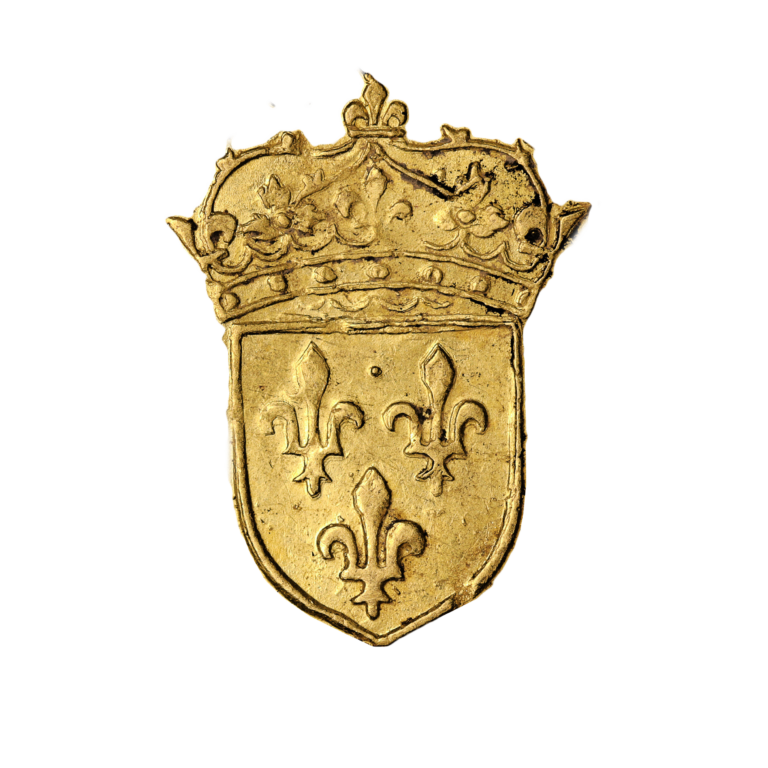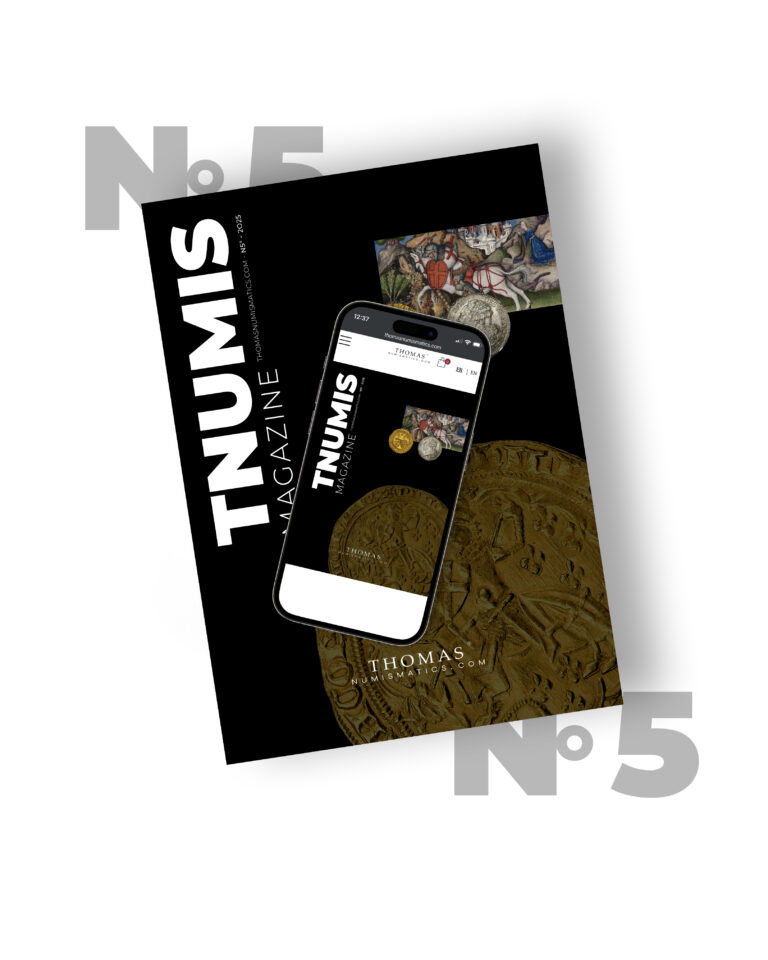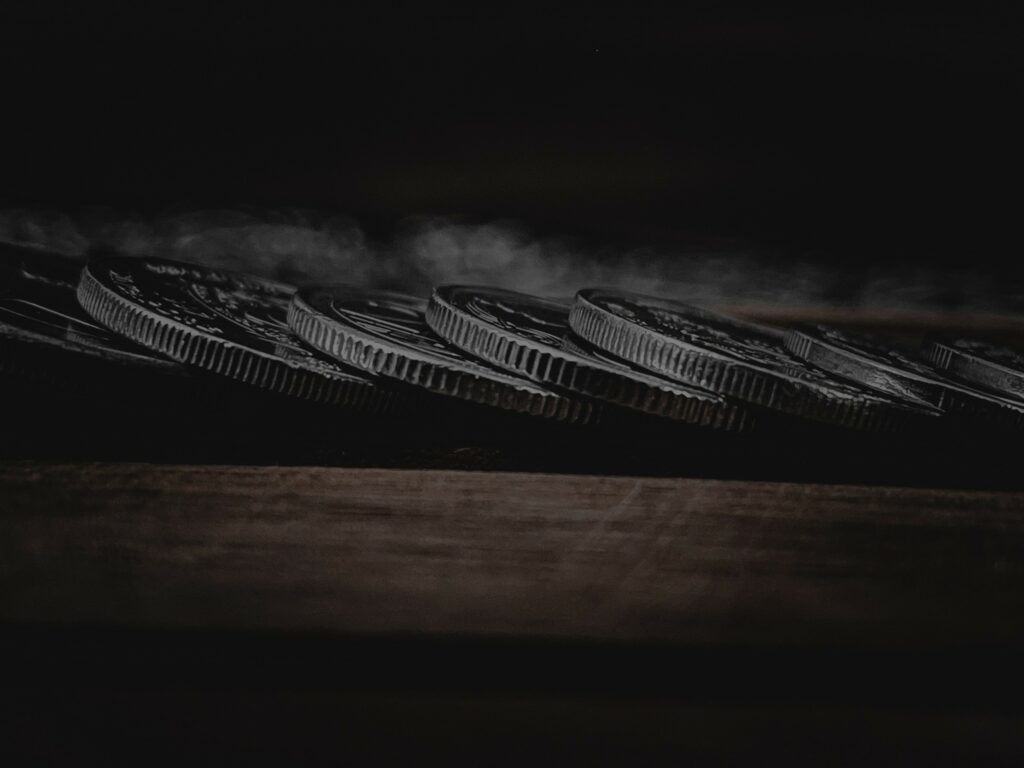
Discover all the news and articles from TNUMIS Magazine exclusively
Animals on ancient coins
Numismatics is also a way to immerse oneself in iconography. Coins have always been the ideal medium for spreading an image to the greatest number of people, over a vast territory. They are also an opportunity for engravers to express their creativity and know-how. Animals are omnipresent in ancient coinage and are certainly one of the most used themes to symbolize an era or a region. How about a quick look at the animals on ancient coins?
Animals on archaic Greek coins
The first archaic Greek coins, between 600 and 480 BC, were made of electrum, an alloy of gold and silver. They are struck on the obverse with a symbol, which is most often an animal and on the reverse with a punch. Each city mints its own monetary series and wants to produce the most beautiful coin that will be seen beyond its borders. This is the reason why it affixes its animal as emblems: the owl of Athens, the tortoise of Aegina, the bee of Ephesus, the Pegasus of Corinth, the seal of Phocaea, etc. The decorations of Greek coins are not only linked to the history of the cities, but also to the beliefs and mythological culture.
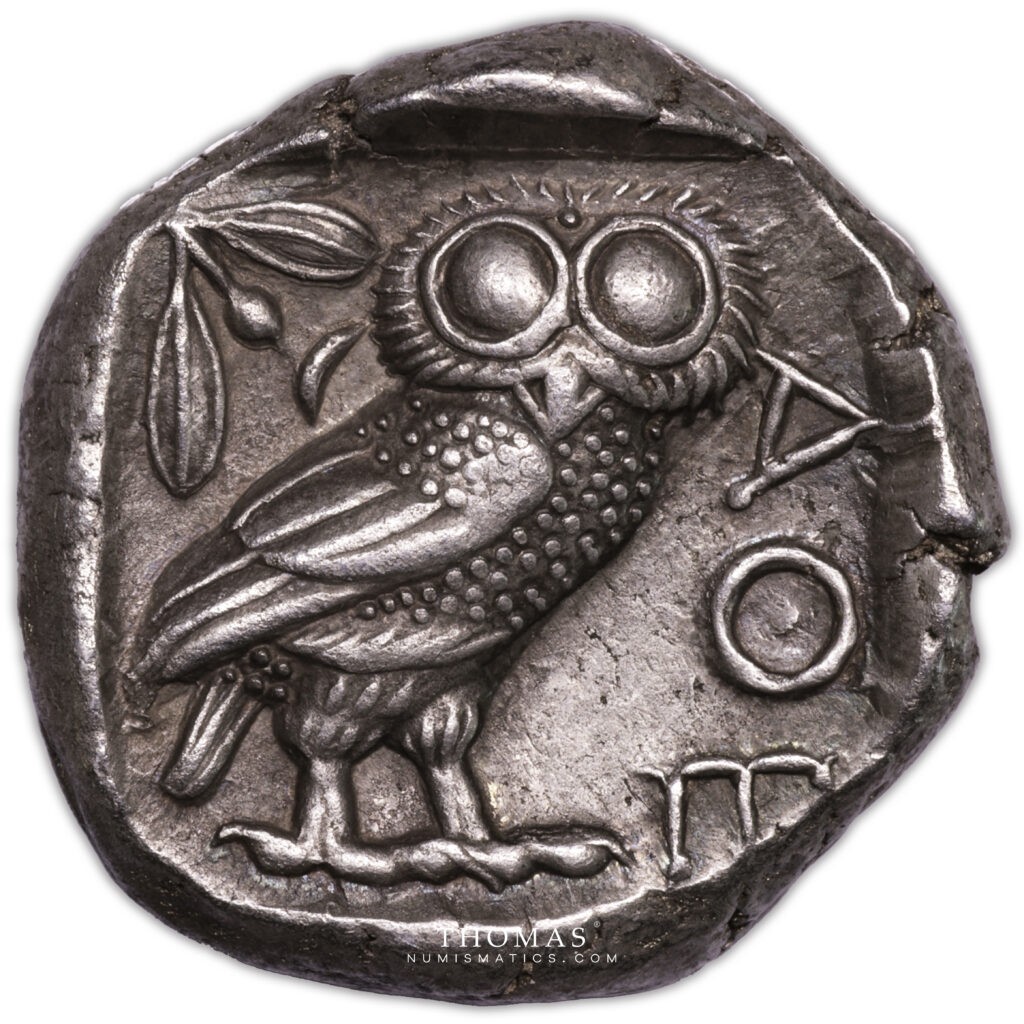
From 480 BC until the advent of Alexander the Great in 330 BC is the classical period. The animal drawings on coins give way to human figures (guardian deities of cities and heroes) and inscriptions.
Animals on Roman coins
The coins issued in Rome are no exception, they also bear animals in their decorations. Legendary, they are mainly associated with the gods of mythology and often the symbol of entire provinces. Here are some of the most represented animals on the coins of ancient Rome.
The She-wolf
One regularly finds the she-wolf, who took in the twins and founders of Rome, Remus and Romulus. The nursing she-wolf is present on coins from the beginning of the Republic to the end of the Roman Empire.
The birds
Birds are protective and reassuring animals. They usually accompany the dead on their way to the afterlife. This is why they are often seen on consecration coins, minted at the time of the emperors’ deaths. The eagle is the personification of Jupiter, the peacock, that of Juno. The phoenix is also a mythical bird that symbolizes resurrection and eternity. It is found, for example, on the reverse of an aureus, struck under Hadrian in homage to Trajan, his deified predecessor. The griffin, a fantastic animal with the head of an eagle and the body of a lion, is also a protective guard. One can find it on denarii of L. Papius, for example.
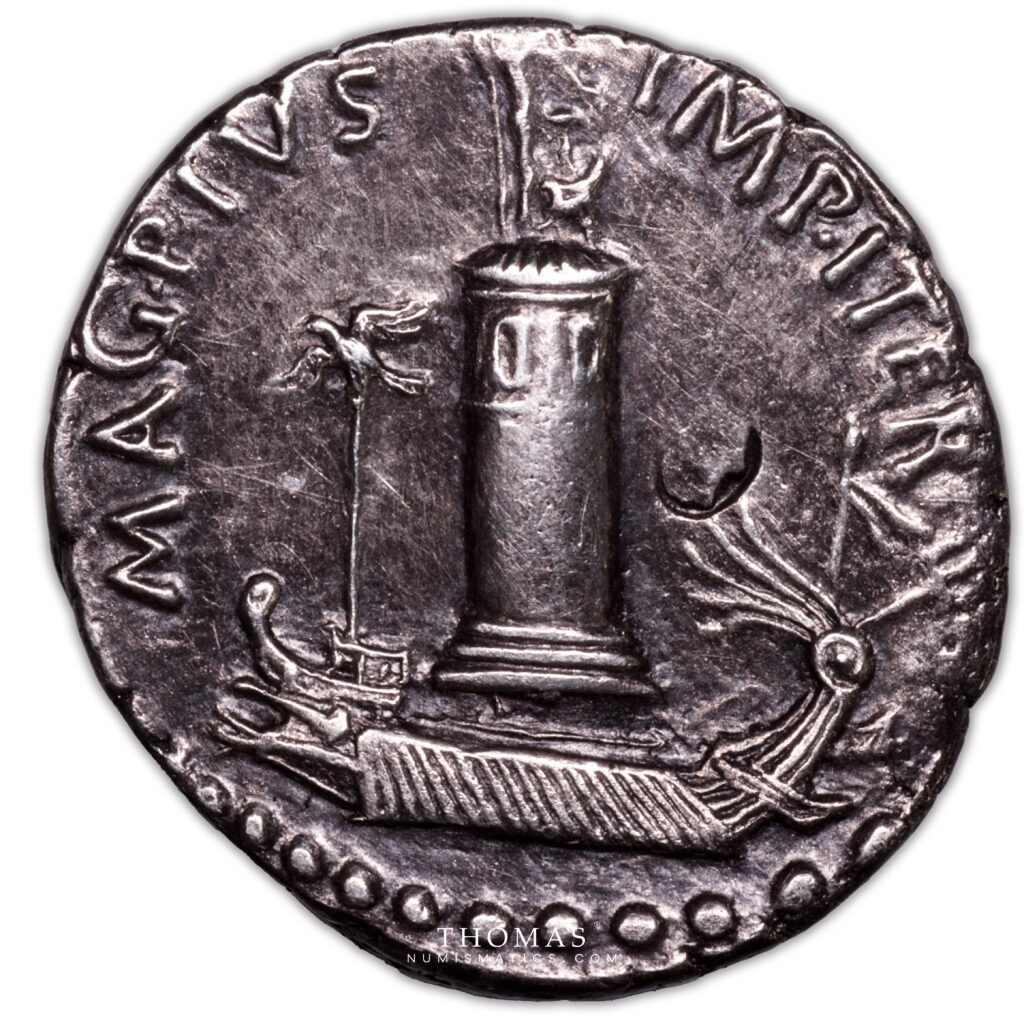
The horse
The horse is one of the most present animals on Roman coins. It is often accompanied by a chariot and a rider.
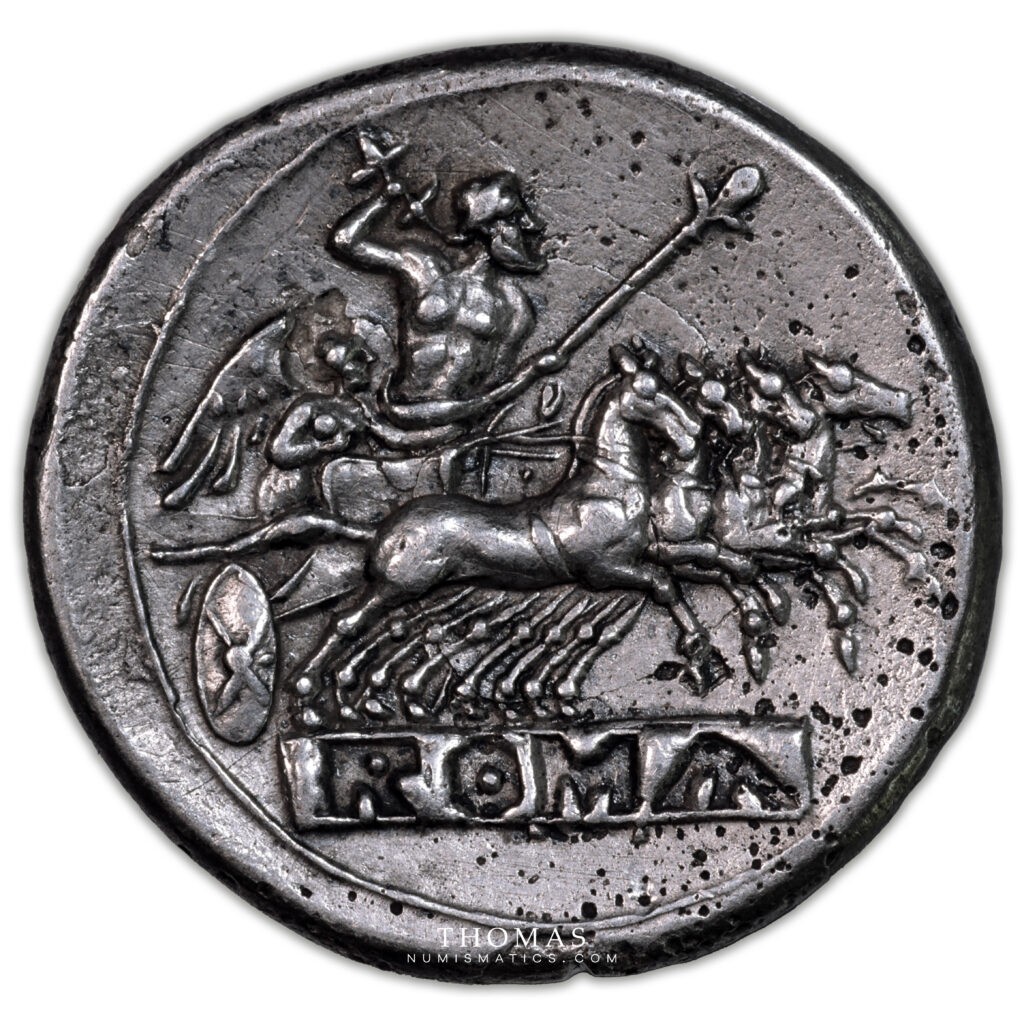
The snake
The snake is also found on some coins during Roman antiquity. Symbols of Salus, the goddess of Health, it is issued on coins when the health of the emperor or his family becomes worrying.
The elephant
Animals could also symbolize provinces, as in archaic Greece. The regions were personified, sometimes symbolized with an exotic animal, borrowed from the local fauna and which marked the spirit of the Romans. This is the case of the elephant which symbolized Africa. In 125 BC, when C. Mettelus minted a denarius decorated with a chariot drawn by elephants, it was to pay tribute to one of his ancestors who had defeated Carthage. But also to position himself in the position of victory and imperial legitimacy. Julius Caesar also favored the elephant on these coins.
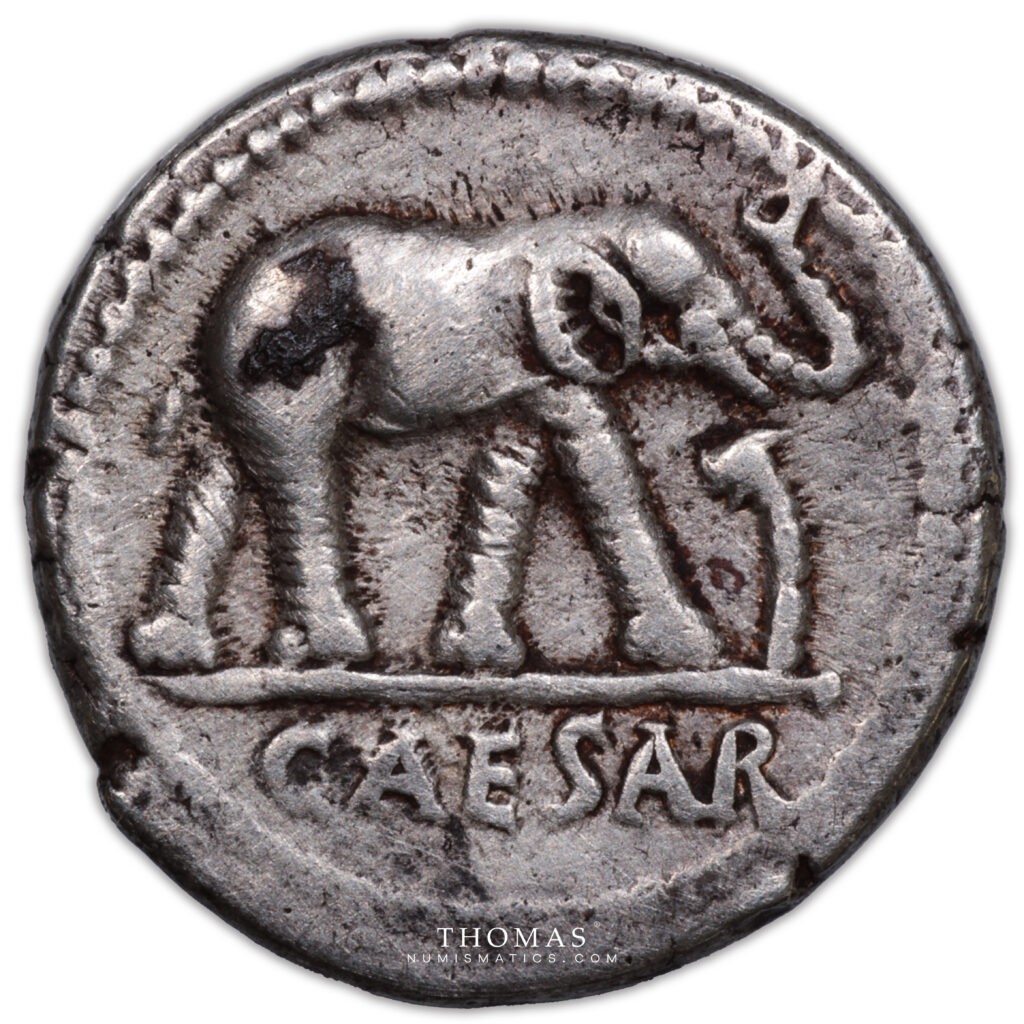
Similarly, the crocodile on the coin of Augustus symbolized Egypt. As for the dromedary of Arabia on a denarius of Trajan, it was also intended to establish the power of the reigning emperor.
Animals on Gallic coins
In Gaul, the bestiary was very exploited by the engravers. The rules of numismatics were not yet founded and the animal representations were sometimes naturalistic, sometimes fanciful or imaginary. At the beginning, the coins were largely inspired by the prototypes of the staters of Philip II of Macedonia and the Tarentine staters. Horses were thus logically found on the reverse of the coins. Gradually, the engravers move away from the models: the antique chariot evolves in a single horse.
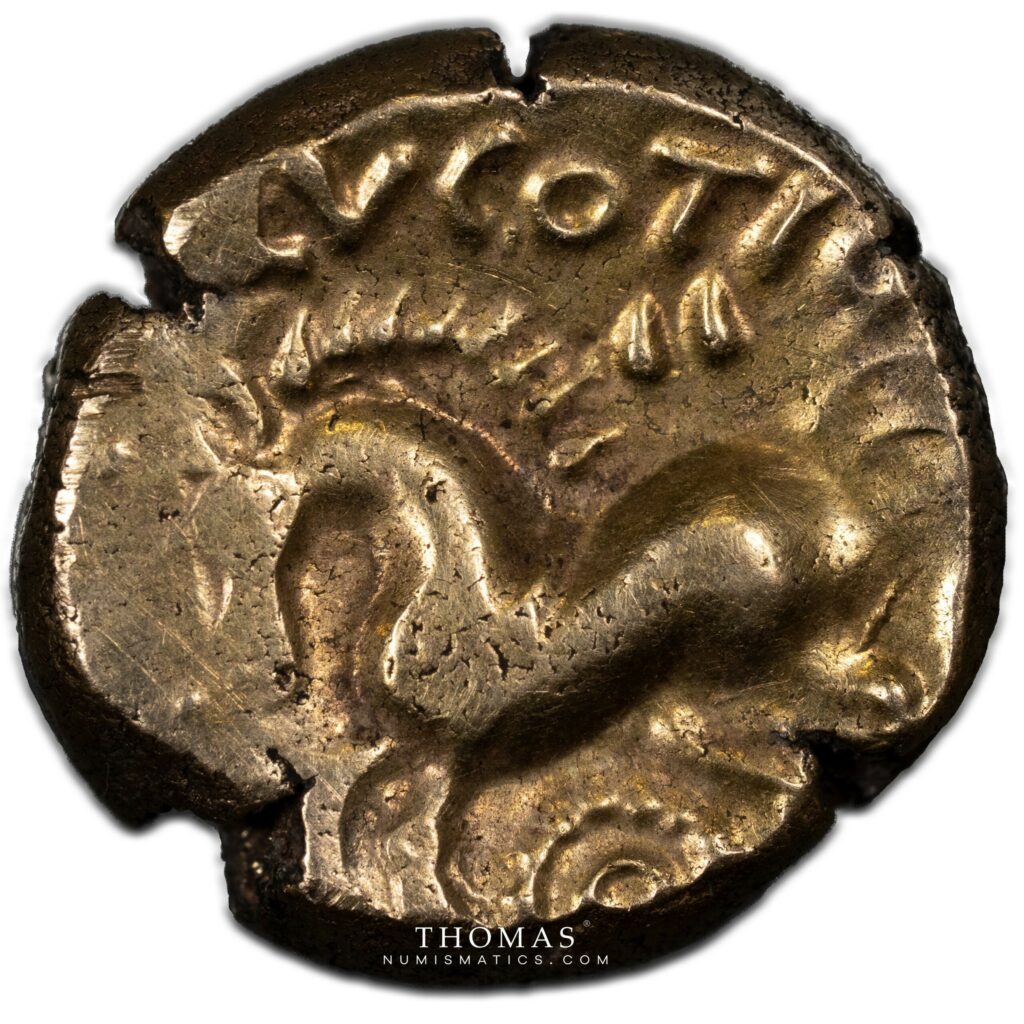
From 121 BC on, the cities had the right to mint their own coins. They took advantage of this to move away from the models. If the obverse remains stamped with a portrait and the reverse with a horse or a chariot. The details show the belonging of the coin to a people.
In the 80-75 BCs, silver coins arrived in eastern Gaul, and Roman denarii were used as models. If the horse remains the main element and “star animal of the Gallic bestiary”, ornamental decorations appear and the representations diversify.
The second most represented animal, after the horse, is the boar. Appreciated for its vigor and courage, it symbolizes the warlike ardor. The Veneti, for example, chose the boar to decorate the obverse of their stater. The Baiocasses even drew it on both sides of their coin, as a military emblem.
The third animal is the lion. The drachms of Marseilles, denarii and Roman sesterces are the main models. Silver or bronze coins showed a lion on the reverse, sometimes realistic, sometimes caricatured. Often represented alone, it is also a warrior animal, symbol of strength and power.
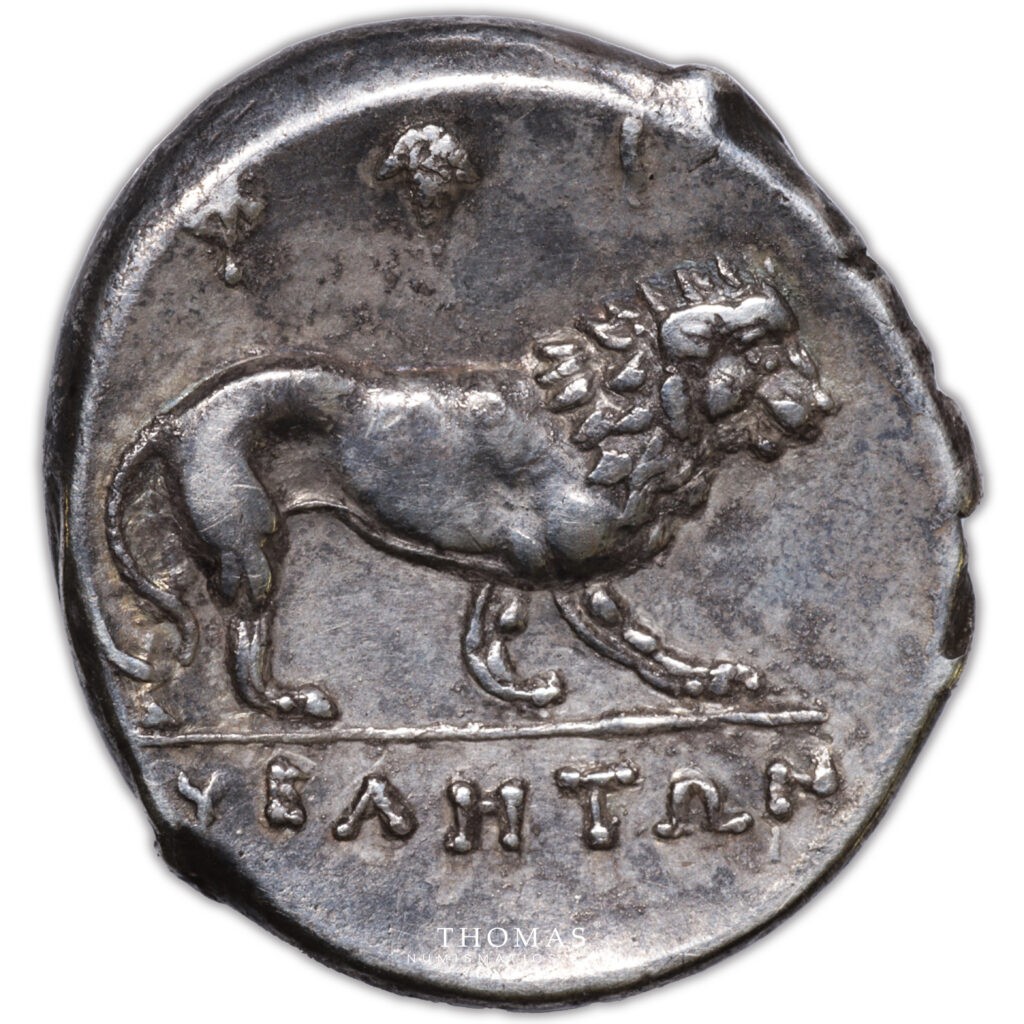
As for the wolf, it appears on gold coins of the western peoples such as the Unelli, but also on silver and bronze coins (Carnutes, Averni). The wolf is always represented in full race, fearsome and ready to attack.
The bull, symbol of power and combativeness, is also present on some silver and bronze coins of the Carnutes, Remi, Ambiani, etc.
Birds are often present, among the Bituriges Cubi and the Lemovices for example. They would draw a wader or a bird of prey. Some peoples, such as the Carnutes, have chosen not to include a horse in favor of the raptor alone.
The eating function of the animals is removed from the subjects of numismatics: no ox, nor sheep, nor pig are known on Gallic coins. All animals mentioned above match an ideology of combat as symbols of war and prestige. It then makes sense that people chose these decorations to show the strength and power of their people.
Our store regularly offers prestigious coins of this type. Come and discover them!
